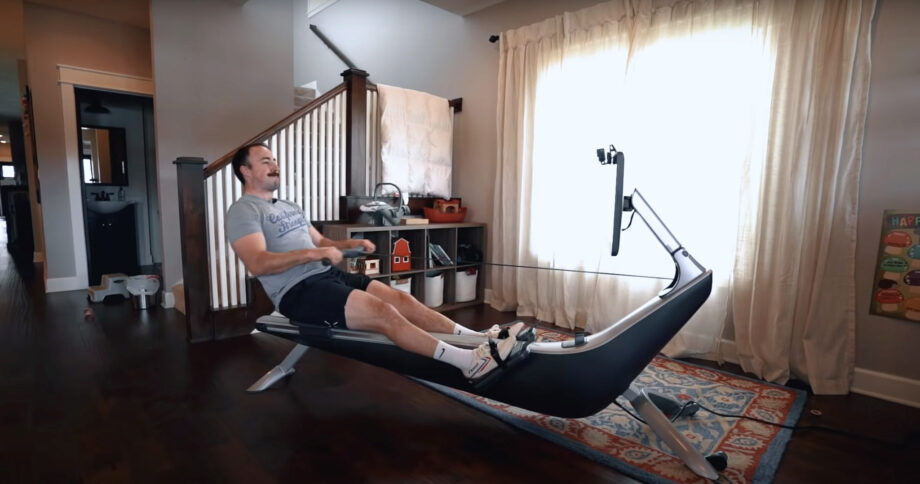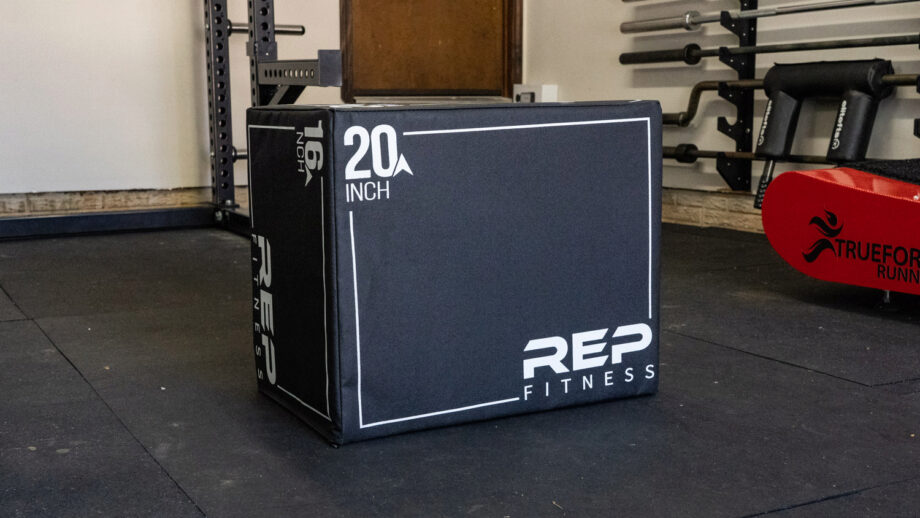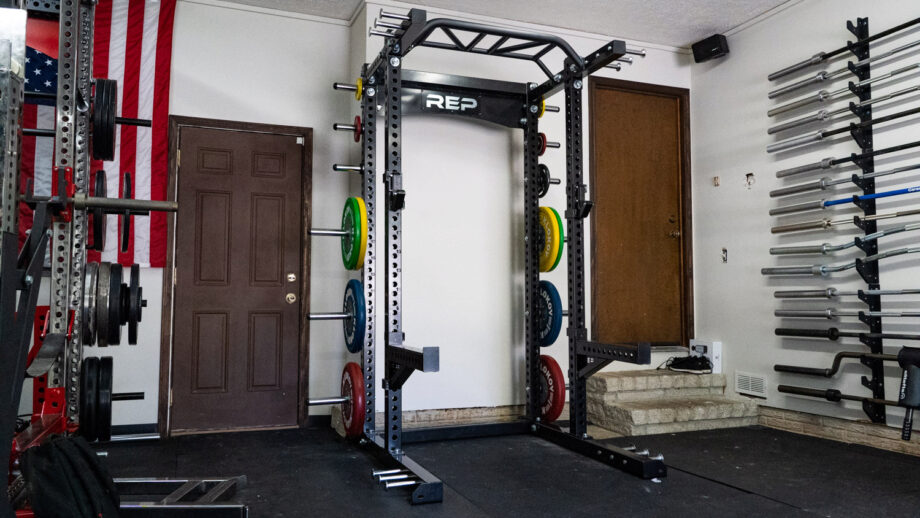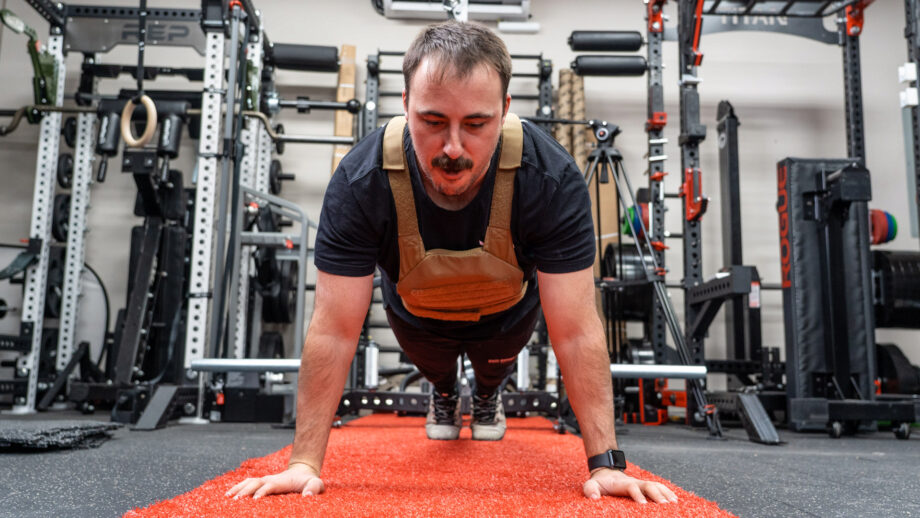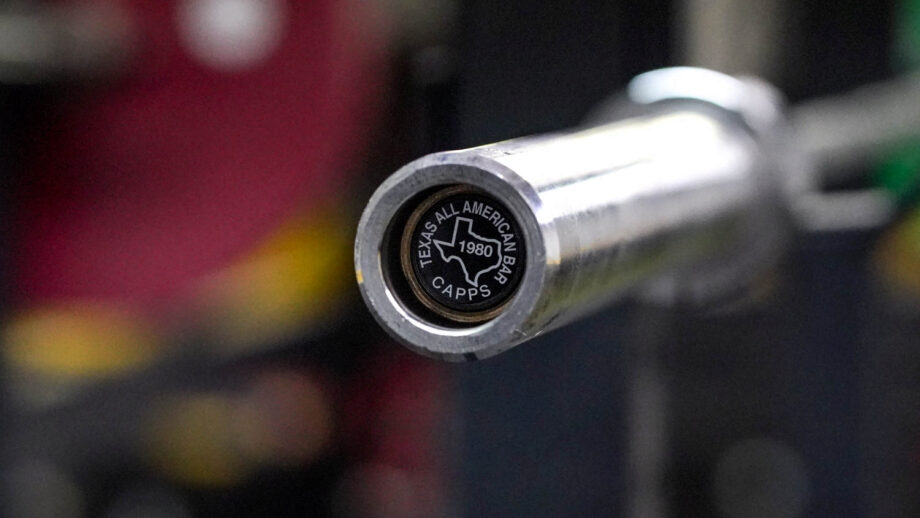With obesity still on the rise in this country, it’s more important than ever to implement and maintain healthy habits that will set you up for the long haul. If you’re in search of ways to manage your weight and improve your health, you may be wondering about rowing for weight loss. An indoor rowing machine is a machine used to simulate the action of rowing on the water, for either exercise or training for the real thing. Indoor rowers are often called rowing ergometers (or ergs) because they measure how much work is performed by the rower. Unlike many other cardio machines, indoor rowing provides a full-body conditioning workout.
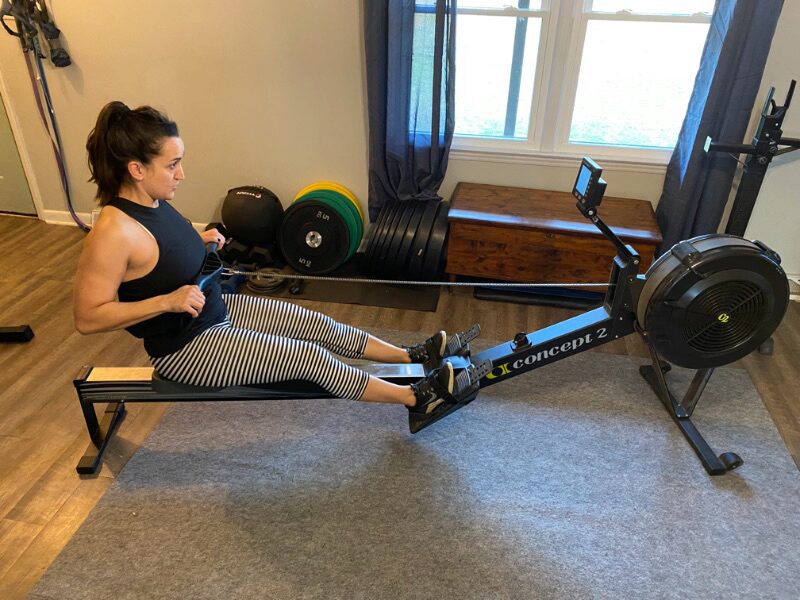
The muscles of the lower and upper body coordinate to contribute to the rowing motion. Any idea what this is great for, beyond raising your heart rate? You guessed it—weight loss. The more muscles that are involved in any activity, the more calories you’ll burn.
This article will explain how to use a rowing machine for weight loss, how many calories and fat you can burn on a rowing machine, how often to row to get these results, and the other benefits of indoor rowing.
Medical disclaimer: This article is intended for educational and informational purposes only. It is not a substitute for health or medical advice. For medical advice, contact an appropriate healthcare provider.
Understanding Weight Loss
Before we talk about rowing for weight loss, we need to start with the fundamentals: You can’t out-train a bad diet.
No matter how much exercise you do, how much hard work you put in, or how many calories you burn, if you’re taking in too much fuel, you will put on weight. The main driver of weight loss is calories-in versus calories-out, and you need to be in a calorie deficit for this to happen.
Are there other factors? Sure, and they’re important, but not as important as calories-in versus calories-out.
Weight loss comes in three forms: water weight, fat burn, and muscle loss. Losing muscle mass is not great because muscle is a tissue that rebuilds constantly, helps to burn calories, and maintains your strength levels. Water weight is okay, but this is usually put back on. The weight loss you want is from excess fat.
As a general rule, bigger people have an easier time with weight loss because they’ll burn a greater number of calories than smaller people doing the same activity over the amount of time. And, men usually have an easier time than women with weight loss because they tend to have more lean muscle than women, and because of some hormonal reasons.
How Many Calories Can You Burn Using A Rowing Machine?
Calorie burn is highly dependent upon your body size and fitness level, but we’ve got some good estimations to provide. The gist, though, is that a smaller person will burn fewer calories than a larger person doing the same activity for the same amount of time because it requires less energy to move less body weight.
According to Harvard Health, when you’re rowing at a moderate pace for 30 minutes:
- A 125-pound person will burn 210 calories
- A 155-pound person will burn 252 calories
- A 185-pound person will burn 294 calories
If you take it up a notch and row with vigorous intensity for 30 minutes:
- A 125-pound person will burn 255 calories
- A 155-pound person will burn 369 calories
- A 185-pound person will burn 440 calories
This jump in calorie burn makes sense because, for every liter of oxygen you inhale, you burn 5 calories. Increasing your rowing intensity will demand more O2 and this will increase your calorie burn.
Plus, if you complete a high-intensity interval training (HIIT) workout on a rowing machine, not only will you burn more calories in the same 30 minutes, you’ll also burn more calories when your workout is over, too. This phenomenon is known as excess post-exercise oxygen consumption, or EPOC.
EPOC is the amount of oxygen required to restore your body to homeostasis. After a particularly challenging workout like HIIT, your body has to work in overdrive to get back to homeostasis, thus increasing your calorie burn for hours after you’ve stopped exercising.
Is Rowing Good For Burning Body Fat?
We hate to break it to you, but indoor rowing will not magically reduce body fat .
However, rowing in conjunction with a caloric deficit can be an effective combination to reduce body fat. Pairing rowing with a nutrient-rich diet that focuses on vegetables, fruits, whole grains, lean protein, and healthy unsaturated fats, will aid in helping to burn fat. But this is only part of the puzzle.
RELATED: Best NordicTrack rower
Resistance training, no matter what form it takes, is also key. It will help you hang on to and build muscle, which will in turn help you burn more calories than if you didn’t have that muscle.
And the other key to this equation is consistency. Achieving fat loss results will require consistent effort in both nutrition and exercise. Sustainable fat loss takes time, and you’ll have to be willing to commit for the long haul to see real results.
How Often To Row For Weight Loss
How often you should row for weight loss will come down to a few factors, but let’s start with general advice.
The CDC’s guidelines for maintaining a healthy weight suggest 150 minutes of moderate-intensity cardio exercise per week, or 75 minutes of vigorous-intensity aerobic exercise per week.
In terms of a weekly schedule, this could mean five 30-minute sessions of moderate-intensity rowing. This would be at an intensity where you could talk and row at the same time. Or, you could do five 15-minute HIIT sessions per week—during HIIT, it should be hard to maintain talking and rowing at the same time.
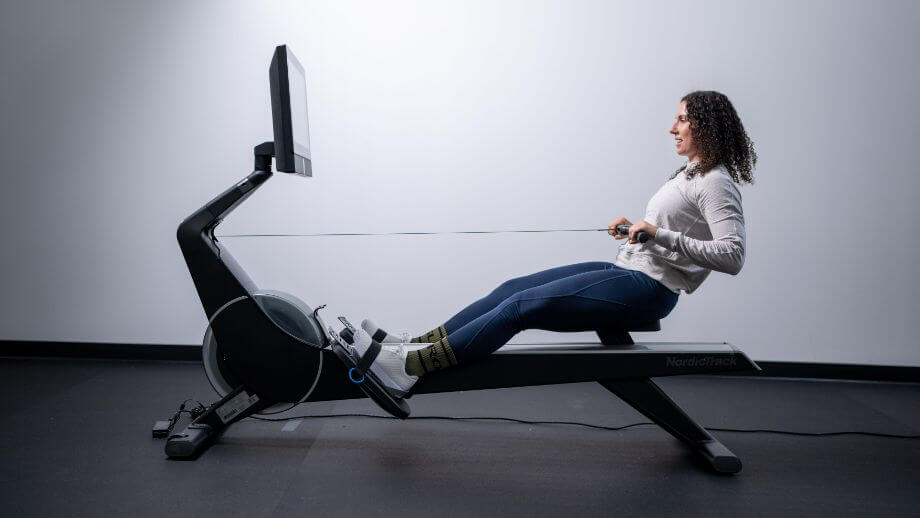
You can set your exercise routine up in various ways, but as long as you meet and exceed the time guidelines, above you’ll be in a good position.
Beyond cardiovascular exercise, there are other factors in play when it comes to weight loss, including something called non-exercise activity thermogenesis, or NEAT. NEAT represents the energy expended for everything you do that is not sleeping, eating, or exercising. NEAT can account for up to 15% of daily calories burned—substantially more than exercise alone.
To increase NEAT, find more opportunities to move and include them into your daily routine. For example:
- Take the stairs instead of the elevator
- Park further away from the entrance when you go shopping
- Do some house/yard work
- Play with your kids
- Take your dog for a walk
When you combine the CDC guidelines with living a more active life on the daily, you’ll find it easier to lose weight.
Rowing Vs. Running: Calories Burned And Fat Loss
Before getting into which burns more calories and fat, remember you’ll get many of the same cardiovascular benefits from both, including better heart health and mental health. It all depends on your comfort and preference.
That being said, you’ll burn more calories from running (whether on a treadmill or outside) than from rowing over the same amount of time.
| Row 30 min | Run 30 min | |
| 125-lb person | Burns 210 cals | Burns 295 cal |
| 155-lb person | Burns 252 cals | Burns 360 cal |
| 185-lb person | Burns 294 cals | Burns 420 cal |
*Data from Harvard Health studies on rowing 30 minutes at a moderate pace and running at a 10-minute-mile pace for 30 minutes
In fact, one study found that energy expenditure on the treadmill induced higher rates of energy expenditure than on all other indoor exercise machines, including rowing machines and exercise bikes.
The obvious benefit of running over rowing is that you don’t necessarily need a piece of equipment like a rowing machine to get your sweat on. Just strap on a pair of shoes and go. On the flip side, however, running is much more high-impact than rowing. So, if you’re looking for low-impact exercise while still keeping the intensity high, an indoor rowing machine could be a great solution.
RELATED: Rowing vs Running
Rowing Machine Vs. Elliptical: Calories Burned And Fat Loss
Both a rower and an elliptical provide a low-impact, full-body cardio workout. However, there are a few differences.
The elliptical is done standing and is weight-bearing. (If you have any joint issues, stick with the rowing machine because you’ll get many of the same benefits without the discomfort.)
Then there’s the calorie burn: Harvard Health says that a 185-pound person burns 378 calories in a 30-minute, moderate-intensity workout on an elliptical, as compared to 294 calories on a rowing machine. The elliptical is more similar to running in its movement pattern, so this makes sense in terms of caloric expenditure.
Another concern in the rowing machine vs. elliptical debate is the space you have, as well as your budget: Both machines take up quite a bit of floor space when in use, but many rowers fold up to decrease their footprint for storage. Also, ellipticals require much more height in your space than rowers do. There’s the cost, too—a commercial-grade rower will set you back about $1,000, whereas a commercial-grade elliptical will cost closer to $3,000.
Other Benefits Of Rowing
Rowers has plenty more rowing machine benefits beyond potential weight loss.
Rowing is a full-body exercise that helps burn calories and build muscle. Ever seen a skinny professional rower? The size of their quads and back is something to behold! But there are other important health benefits, too.
For one, it improves your cardiovascular endurance because not only does rowing rely on your lower body, but the big muscles of the upper body, too. Both drive blood to and from the heart and will have you breathing heavily.
Two, rowing recruits plenty more muscles than other forms of cardio, like running, and can help improve muscular endurance. And lastly, because you’re in a seated position, rowing is lower-impact than an exercise like running, too. If you have ankle, knee, hip, or back problems, this will be important.
Types of Rowing Machines
Indoor rowing machines come with four different types of resistance: air, water, magnetic, and hydraulic.
In an air rowing machine, air flows over the flywheel to create resistance, while the water rower uses water instead of air to provide resistance. These machines are both user-powered, in the sense that the harder you pull, the more resistance you’ll generate.
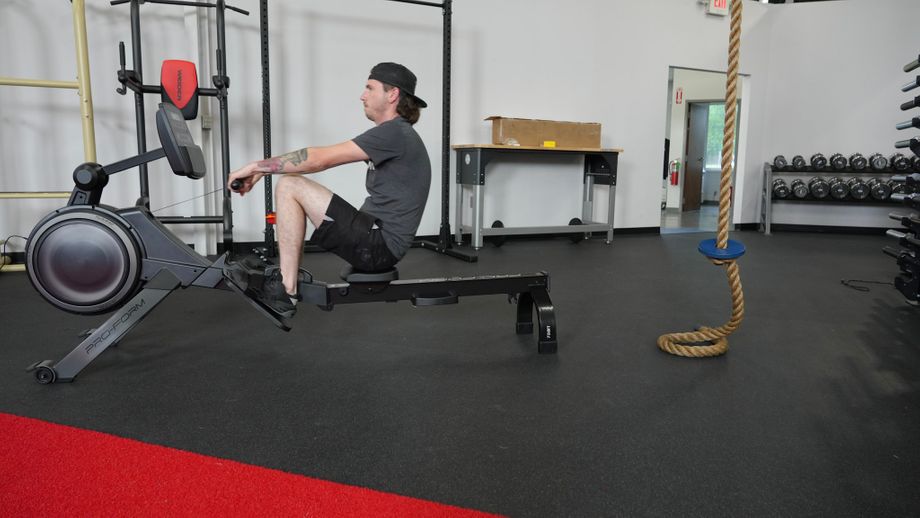
Both magnetic and hydraulic rowers allow you to manually control the resistance. Magnetic rowers are powered by strong magnets working in conjunction with the spinning flywheel, while hydraulic rowers don’t have a flywheel and the resistance comes from the piston that moves in and out of the cylinder as you row.
How to Use a Rowing Machine
Once you get the hang of rowing technique, you’ll be cruising in no time. Make sure you start with a neutral spine, upright posture looking straight ahead, engaged core muscles, feet tight in the straps, and your arms extended. This is the starting position.
RELATED: How to Use a Rowing Machine
Then think about the four steps of a rowing stroke: catch, drive, finish, and recovery. The catch is your starting position. To drive, use your legs to push off and begin your stroke. To finish, lean to about 100 degrees and pull against the flywheel with your arms. For recovery, release the resistance in your arms, bend your legs, and return to the starting position (the catch) to continue on to the next stroke.
Rowing Workout Ideas
You can row at a moderate-intensity pace for 15 minutes to an hour and get in a great workout. But, this can be dull and not everyone has time for that. If you like to spice up your workout plan, try these rowing machine workouts for weight loss on for size.
Tabata Rowing
- Start with a 3-minute warm-up
- Row with 95-100% intensity for 20 seconds
- Drop down to moderate intensity for 10 seconds
- Repeat for 8 rounds
- Cool down for 3 minutes
15-Minute Rowing Workout
- 40 seconds fast
- 20 seconds slow
- 2-minute rest
- Repeat for five rounds
Rowing For Weight Loss FAQs
Is 30 minutes of rowing enough?
Thirty minutes of rowing is enough to reap physical benefits like better heart health, strength, and even weight loss. The key here is consistency and how frequently you row. If you only do it once a week, that falls far below 150 minutes of moderate-intensity exercise recommended by the CDC. Aim to row for 30 minutes three to four times per week to better meet your weight loss goals.
What is the best rowing machine?
The best rowing machine for you depends on your fitness goals, how much money you’re willing to spend, and the space you have. Our favorite rower is the Concept2 Model D rower, which costs about $1,000. We also recommend:
-Best Interactive Rowing Machine: Aviron Impact Series Rower
-Best Smart Rowing Machine: Hydrow
-Best Folding Rowing Machine: ProForm 750R Rower (Proform 750R review)
-Best Budget Rowing Machine: Sunny Health & Fitness SF-RW5801
-Best Rowing Machine for Cross-Training: NordicTrack RW900
-Best Water Rowing Machine: WaterRower
-Best Compact Rowing Machine: Lifespan RW1000 Indoor Rower
Does rowing build muscle?
The short answer is yes, it can. An indoor rowing machine provides a full-body workout, and works all of the major muscle groups including the chest, back, glutes, and hamstrings in each stroke, making it an effective way to gain muscle for beginners. Is it the most effective way to gain muscle? No—strength training will always be king here—but especially if you’re new to rowing, you should notice some muscle gain from consistent workouts on a rowing machine.
What can a rowing machine do for your body?
Rowing is an effective cardiovascular workout, can improve muscular endurance, increase lower- and upper-body strength, and contribute to weight loss by burning fat. Plus, you can perform HIIT and moderate-intensity workouts on the same machine.
How long should I row?
This depends on how much time you have and what your preference is. Whether you perform shorter HIIT-style rowing workouts, or longer steady-state sessions, you’ll reap important benefits. Aim to follow the CDC’s guidelines for 150 minutes of moderate-intensity cardiovascular activity per week—or 75 minutes of vigorous-intensity exercise per week—to stay healthy.


